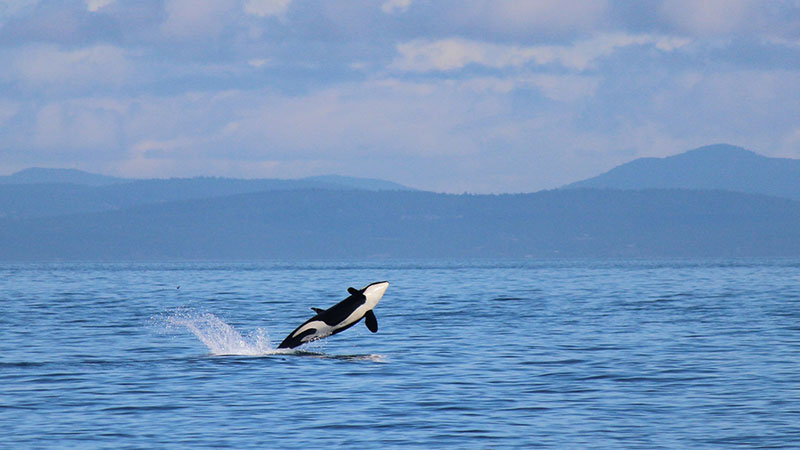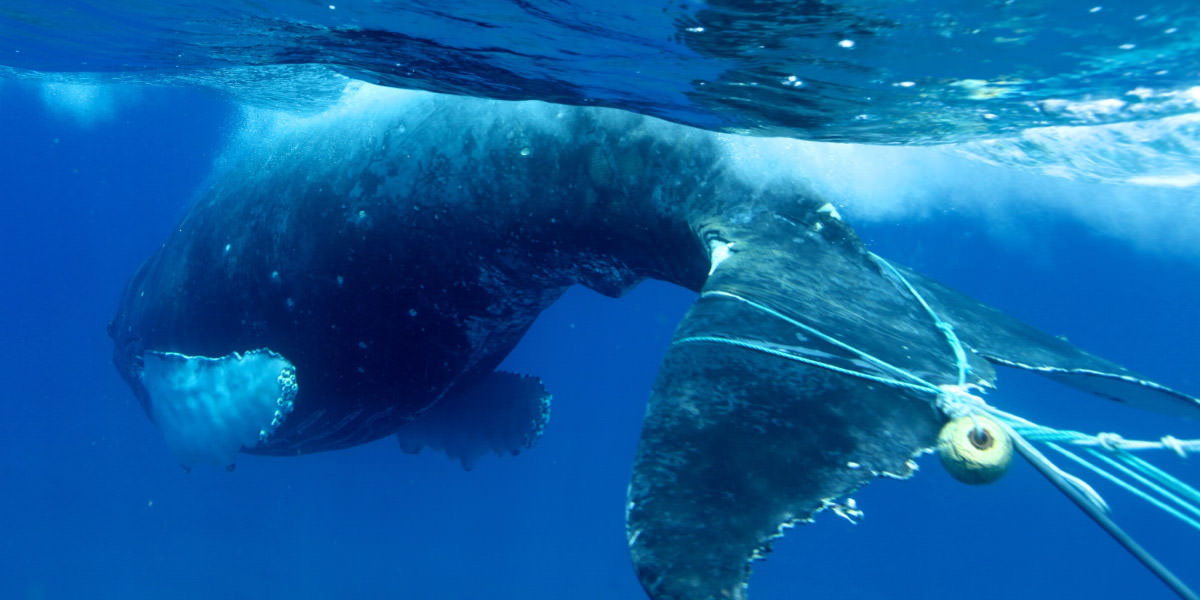Whale Webinars
The National Marine Sanctuaries Webinar Series provides educators, students, and the interested public with educational and scientific expertise, resources, and training to support ocean and climate literacy. Take a look at the whale curated webinars ranging from discussing the cultural importance of whales to whale entanglement response.

Unique Ways to Connect Kids and Teens to the Ocean and Engage Them as Science Communicators
How do we connect kids and teens to the ocean and empower them to act? Story–in all its forms. Humans are hard-wired to spin tales to create emotional connections that help us better understand the world. Join nonfiction storytellers Nora Nickum and Patricia Newman, artist Esteban Camacho Steffensen, and educator Tressa Arbow, who each have ways of translating their passion for ocean conservation and complicated ocean science into forms that entice kids and teens to ask questions, dig deeper, and engage with their communities. Together we will discover new ways to visualize concepts like climate change, ocean acidification, pollution, habitat loss, food web disruption, and underwater noise using an interdisciplinary approach that includes science, art, writing, and speaking. Comment end

New Developments for Passive Acoustic Monitoring of Sperm Whales in Hawaiian Waters
Dr. Yvonne Barkley shares research findings related to tracking whales using passive acoustic monitoring. This webinar discusses a new approach for localizing passive acoustic data of sperm whales collected using towed hydrophone arrays and demonstrates how this information can be incorporated into species distribution models to improve our understanding of sperm whale habitat preferences in Hawaiian waters.

The Cultural Significance of Humpback Whales in Hawaiʻi
Whales are known as koholā in Hawaiian and have long had a place in Hawaiian culture. The Kumulipo creation chant speaks about the birth of the whale, “Hanau ka Palaoa noho i kai” (born is the whale living in the sea). The koholā was believed to be a manifestation of Kanaloa, the god of the ocean, and is said to be responsible in helping the Polynesians discover the Hawaiian Islands. Join Solomon Pili Kahoʻohalahala as he shares that whales are also revered as ‘aumakua (spiritual protector) to specific families and were generally viewed as divine beings.

The Occurrence of Humpback Whales Across the Hawaiian Archipelago Revealed Through Acoustics
This presentation describes recent fluctuations in the presence of humpback whales in Hawaiʻi over the past several years and the science being conducted to understand these trends. Dr. Marc Lammers discusses the application of novel tools to understand the occurrence of humpback whales in remote habitats, including the use of a Wave Glider and machine learning algorithms to detect the presence of whales in the Papahānaumokuākea Marine National Monument.

What Orcas Teach Us: The Southern Residents' Battle Against Extinction and the State of our Watersheds
Over 18 months, the Seattle Times took a deep look at the southern resident orca extinction crisis to explore and expose the roots of why these animals, the top predator in our marine waters, are struggling to survive. Lynda Mapes, the lead journalist on the newspaper's award-winning series Hostile Waters will explain what the newspaper learned and solutions that will benefit people and orca alike. Lynda Mapes is the environment reporter at the Seattle Times.

Studying Whales and Dolphins in the Hawaiian Archipelago
Long-term small-boat based studies in the main Hawaiian Islands have revealed amazing information on 11 resident species of whales and dolphins, as well as migratory and open-ocean species that visit the islands. Studies in the Northwestern Hawaiian Islands have been more limited due to logistics of vessel surveys. Comparisons of sightings and tagging data from the two areas suggest that there are resident populations of many species of dolphins and whales in Papahānaumokuākea Marine National Monument that have yet to be recognized. Join research biologist Robin Baird of Cascadia Research Collective who compares what is, and isn’t, known about whales and dolphins throughout the Hawaiian archipelago.

Catch and Release: Large Whale Entanglements and Response Efforts to Mitigate the Threat
Entanglement or by-catch is a global issue that affects many marine animals, including large whales like the charismatic humpback whale. Hundreds of thousands of whales die worldwide each year, but the impacts go beyond mortality. When conditions and resources allow, trained responders under NOAA’s Marine Mammal Health and Stranding Response Program attempt the dangerous task of freeing whales from life-threatening entanglements. However, the ultimate goal is to gain information to reduce the threat for whales and humans alike. Learn more about whale entanglements and response efforts from expert Ed Lyman.

Protecting Blue Whales and Blue Skies - Vessel Speed Reduction in California
California's nutrient-rich coastal waters are home to several species of large whales, including gray whales and endangered blue, humpback, and fin whales. The state is also home to four major shipping ports – San Diego, Long Beach, Los Angeles, and Oakland – that results in thousands of large container and tanker transits taking place within California national marine sanctuary waters. In the past decade, over 10 whale fatalities have been recorded along the California coast as a result of ship and whale collisions, and recent research suggests that many more of these ship strikes are going undetected each year. To address this global issue, national marine sanctuaries along the West Coast have been working with a number of partners to better understand the issue of ship strikes and slow vessels down to reduce harmful air emissions and protect endangered whales.

Salmon & Orcas: The Stories of Science with NOAA Fisheries & Lynda Mapes
The new book ORCA: Shared Waters, Shared Home, due out in June 2021, describes how NOAA Fisheries scientists seek to unravel connections between endangered Southern Resident killer whales, threatened Puget Sound Chinook salmon, and the rest of the marine ecosystem. Hear from those scientists and an award-winning journalist who covers them as they examine the smallest organisms in the ocean, looking for clues to understanding salmon survival. Hear also from the biologists who have recently identified the sources of Southern Resident prey across much of the West Coast. Together they will tell the stories of salmon survival and the native Northwest habitat our salmon and steelhead depend on -- and that we can all help restore.

How Humpback Whales Feed Hawai`i
The waters around Hawai‘i are low in important nutrients for life, like iron and phosphorus. As a result, the plankton biomass is low, and less plankton means less food for fishes. Enter the humpback whales! Whales boost the entire food chain by shedding their skin, which is made up of proteins and fats, perfect for zooplankton to eat. More zooplankton means more fishes, octopus, and coral. But, that's not all. Join us to hear the rest of the story!

Hawaiian Islands Humpback Whale National Marine Sanctuary: 2021-2022 research symposium Day 1
The Hawaiian Islands Humpback National Marine Sanctuary invites you to participate in the 2021 Sanctuary Research Symposium. This symposium aims to introduce the public to some of the cutting-edge humpback whale science and conservation work being conducted in sanctuary waters by NOAA staff and by partners in academia and the non-profit research community. This year’s participants are recipients of the National Marine Sanctuary Foundation’s research mini-grants and include: The Hawaii Marine Mammal Consortium, the University of Hawai`i at Manoa, the University of Hawai`i at Hilo and Whale Trust. Please join us to learn more about some of the exciting research being conducted in the sanctuary!

Telling the Story of Springer
Almost 20 years ago a young killer whale named Springer brought the Northwest together. The young orca first spotted alongside ferries in Puget Sound turned out to be an orphaned Northern Resident killer whale hundreds of miles from home. The new book "Orca Rescue: the True Story of an Orphaned Orca Named Springer," describes how she was rescued, rehabilitated, and returned to her pod on the north end of Vancouver Island. Today she is thriving, with two calves of her own. Hear the inspiring story from the people who lived it, and its lasting lessons for the recovery of Southern Residents.

Every Calf Counts: Hawaii's humpback whale mother and calf pairs in a time of changing climate
Each winter, humpback whales from across the North Pacific Ocean head to Hawaiian waters to breed and raise their young. Within the islands, the nearshore waters along the western shoreline of Maui, Hawai`i are a favored nursery region for mothers and their young calves. Over the past twenty years—the Keiki Kohola Project—a small, grassroots research organization based on Maui, has been working to provide information to help ensure the well-being of mothers and calf pairs during this critical nursery period.
Between 2015 and 2017, dramatic increases in water temperatures in the North Pacific severely impacted the region's marine ecosystem. These impacts included the food supplies on which Maui's humpback whales depend. Join Dr. Rachel Cartwright to learn how Maui's mothers and their calves weathered these lean years. She will provide up-to-date information on their current status, and more exciting information about these humpback whale mother and calf pairs.

Insights into humpback whale use of entire ocean basins gained through two large, international studies
Long-term studies of humpback whales in two key habitats within the United States Exclusive Economic Zone (EEZ), were essential to the establishment of two national marine sanctuaries (Stellwagen Bank and the Hawaiian Islands Humpback Whale national marine sanctuaries). These studies also provided the foundation and inspiration for two unprecedented, ocean-basin studies of humpback whales in the North Atlantic Ocean (YONAH project) and the North Pacific Ocean (SPLASH project). The results of the two projects have provided new insights into the complex lives of humpback whales and their use of entire ocean basins. In addition, the two areas have become focal points for understanding how humans impact whales throughout all oceans, and have stimulated actions to reduce those impacts.

